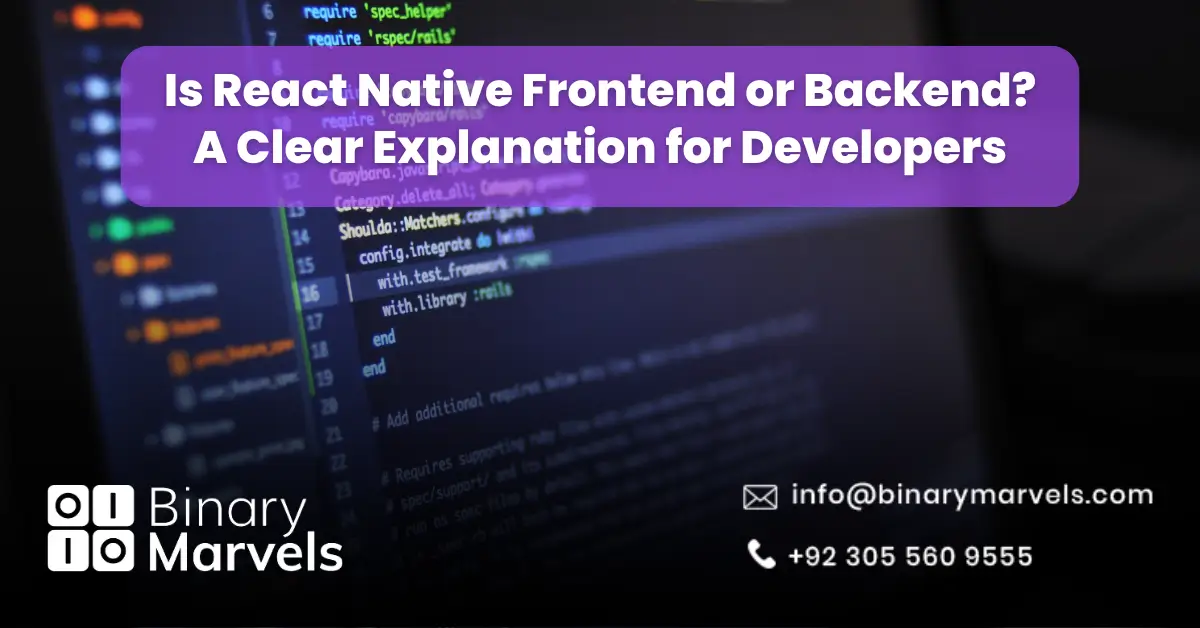
Ever wondered what the real difference is between a Voicebot, a Callbot, and an AI Voice Agent? If you’ve explored voice automation for your business, chances are you’ve come across these terms—and maybe even used them interchangeably. While they might sound similar, each of these technologies serves a unique purpose in how businesses interact with customers over voice channels.
From handling routine customer queries to delivering human-like conversations, understanding how these tools work can help you choose the right solution for your needs. In this article, we’ll break down what makes a Voicebot different from a Callbot, how AI Voice Agents take things further, and which one is best suited for different use cases in today’s digital customer service landscape.
What Is a Voicebot?
A Voicebot is a conversational AI tool that interacts with users through voice commands, often via mobile apps, websites, or smart devices like Alexa or Google Assistant. It uses automatic speech recognition (ASR) to understand spoken words, and natural language processing (NLP) to determine the user’s intent—then responds with a pre-defined or AI-generated reply.
Voicebots are typically designed to handle straightforward, rule-based tasks such as answering frequently asked questions, booking appointments, or providing basic support. Unlike traditional IVR systems, which rely on rigid menus (“Press 1 for…”), voicebots allow users to speak naturally, making interactions faster and more intuitive.
✅ Common Use Cases for Voicebots
- Customer service automation on websites
- Voice-enabled product support on mobile apps
- Smart home device commands
- Booking or scheduling systems
✅ Pros
- Available 24/7
- Speeds up routine tasks
- Reduces live agent workload
- Integrates well with mobile and web platforms
❌ Cons
- Limited to basic queries
- Struggles with complex or emotional interactions
- May misinterpret accents or slang
Also Read: Revamp Your Call Center with VICIDial Development Services
What Is a Callbot?
A Callbot is an AI-driven voice assistant specifically designed to handle telephone calls. Unlike voicebots that operate across web or app interfaces, callbots function within the telephony system, making them ideal for automating inbound and outbound calls in call centers. They can greet callers, understand their requests using speech recognition, and route them to the right department—or even complete tasks—without any human intervention.
Think of a callbot as the smarter, more conversational upgrade to traditional IVR (“Press 1, Press 2”) systems. Instead of forcing customers through rigid menus, callbots allow users to speak naturally. However, most callbots are still relatively limited in scope, often handling simple, repetitive queries or transferring calls when a request becomes too complex.
✅ Common Use Cases for Callbots
- Answering and routing customer calls
- Confirming appointments or orders via phone
- Handling payment reminders or surveys
- Automating phone-based FAQs
✅ Pros
- Works directly with phone systems
- Reduces wait times and call volumes
- Improves call routing accuracy
- Operates 24/7 without live agents
❌ Cons
- Limited in conversational depth
- Often fails with nuanced or emotional conversations
- Can frustrate users if not well-trained
What Is an AI Voice Agent?
An AI Voice Agent is the most advanced form of voice automation—designed to simulate real human conversation with a high degree of intelligence and empathy. Unlike voicebots and callbots, which often follow predefined scripts or flows, AI voice agents leverage machine learning, context awareness, and natural language understanding (NLU) to carry out dynamic, two-way conversations in real time.
These agents are capable of understanding context, remembering past interactions, adapting their tone, and even recognizing customer emotions. AI voice agents go beyond answering simple questions—they can troubleshoot complex issues, assist in sales conversations, or provide personalized support at scale. They’re often integrated with CRMs, analytics tools, and backend systems to deliver seamless, end-to-end experiences.
Also Read: A Guide to AI Voice Agent Development
✅ Common Use Cases for AI Voice Agents
- Customer support for technical or multi-step issues
- Intelligent virtual assistants in banking or healthcare
- Voice-enabled sales assistants
- Personalized onboarding and retention calls
✅ Pros
- Natural, human-like conversations
- Can handle complex and multi-turn interactions
- Learns and improves over time
- Enhances customer satisfaction with empathy and context
❌ Cons
- Higher implementation cost
- Requires significant training and data integration
- May still need human fallback for edge cases
Voicebot vs Callbot vs AI Voice Agent: Side-by-Side Comparison
To better understand the key differences between these technologies, here’s a side-by-side comparison based on critical features and capabilities:
| Feature | Voicebot | Callbot | AI Voice Agent |
|---|---|---|---|
| Primary Channel | Apps, websites, smart devices | Telephone systems | Omnichannel (phone, app, website, CRM) |
| Technology Base | ASR + NLP | ASR + basic scripting | ASR + NLP + ML + Contextual AI |
| Task Complexity | Simple to moderate | Simple, rule-based | Complex, dynamic, multi-turn |
| Conversational Ability | Basic dialogue | Menu-driven or keyword-based | Human-like, adaptive, emotion-aware |
| Personalization | Minimal | None or very limited | High – remembers past interactions |
| Integration Capabilities | Limited (mostly frontend) | Moderate (with phone systems) | Deep – CRM, analytics, APIs, custom workflows |
| Best For | FAQs, scheduling, app support | Call routing, simple phone-based queries | Sales, support, healthcare, personalized conversations |
| Scalability | High | Moderate | Very high |
| Cost | Low to medium | Medium | High (but scalable ROI) |
Also Read: Why Your Business Needs an AI Agent for Outbound Calls?
Key Differences at a Glance
While Voicebots, Callbots, and AI Voice Agents all fall under the umbrella of voice automation, they differ significantly in how they operate and what they’re capable of. Here’s a quick breakdown to help you spot the most important distinctions:
Channel of Use:
Voicebots operate through apps, websites, or smart devices. Callbots are strictly phone-based. AI Voice Agents, however, can function across multiple channels, offering a seamless experience whether it’s on a call, in an app, or through a CRM.
Complexity of Conversation:
Voicebots and callbots are designed for simple, transactional tasks—like answering FAQs or routing a call. In contrast, AI Voice Agents handle complex, human-like conversations, adapting in real time and responding with context.
Level of Intelligence:
Callbots use basic logic trees and voice recognition, while voicebots include NLP capabilities. AI Voice Agents go a step further with machine learning, emotional intelligence, and memory of past interactions—making them the most intelligent and flexible option.
Purpose and Use Case:
Use a voicebot for quick support on digital platforms, a callbot for basic automation over the phone, and an AI Voice Agent when you need a smart, scalable alternative to human agents for sales, technical support, or relationship management.
When to Use Each?
Choosing between a Voicebot, Callbot, or AI Voice Agent depends on your business needs, customer expectations, and the complexity of the interactions you want to automate. Here’s how to decide which solution is the right fit:
✅ Use a Voicebot when:
- Your users primarily interact via apps, websites, or smart devices.
- You need to automate simple tasks like FAQs, appointment scheduling, or order tracking.
- Budget is limited, but you still want to offer a self-service option with a conversational interface.
- You’re looking for quick integration into your existing digital platforms.
✅ Use a Callbot when:
- You want to automate inbound or outbound voice calls without involving human agents.
- Your call center receives high volumes of repetitive queries like account balances, order status, or booking confirmations.
- You’re replacing outdated IVR systems with something more interactive and speech-enabled.
- Call routing and basic triage are your top priorities.
✅ Use an AI Voice Agent when:
- Your customer interactions require empathy, context, and human-like understanding.
- You want to scale support or sales operations without sacrificing quality.
- You’re integrating with backend systems like CRMs, ERPs, or analytics platforms for personalized conversations.
- You need a long-term solution that can learn, improve, and adapt over time.
Also Read: Top 10 AI Companies in Pakistan
The Future of Voice AI in Business
The evolution of Voice AI is just getting started. As businesses strive to offer more personalized and efficient customer experiences, voice technologies are rapidly becoming more intelligent, natural, and emotionally aware.
We’re seeing AI Voice Agents equipped with multilingual capabilities, emotion detection, and even adaptive personality traits based on customer profiles. These innovations enable brands to build trust and loyalty at scale—something traditional automation could never achieve. Additionally, deep integration with CRMs, helpdesk systems, and analytics platforms means businesses can now offer truly end-to-end automated conversations, while collecting valuable insights to improve future interactions.
As generative AI and real-time learning advance, the line between human and machine conversation will continue to blur. For businesses, this means faster resolution times, lower operational costs, and a significant boost in customer satisfaction—if the right technology is chosen and implemented strategically.
Supercharge Your Business with AI Today!
As a trusted AI Development Company in Pakistan, we deliver cutting-edge AI Development Services designed to streamline your operations and enhance customer engagement.
Don’t wait—connect with us now and take your business to the next level!
Conclusion
Voicebots, Callbots, and AI Voice Agents may sound similar, but their capabilities and use cases vary significantly. Voicebots are ideal for handling quick, simple tasks across digital platforms. Callbots bring automation to the phone channel, replacing outdated IVR systems. AI Voice Agents, on the other hand, offer a powerful, human-like experience that’s ideal for complex, high-value interactions.
Choosing the right tool depends on your business goals, customer journey, and the level of personalization you want to provide. As voice technology continues to evolve, businesses that invest in the right solution today will be best positioned to lead in customer experience tomorrow.
FAQ: Voicebot vs Callbot vs AI Voice Agent
What is the difference between a Voicebot and a Callbot?
A Voicebot interacts with users through voice on digital platforms like websites or mobile apps, while a Callbot operates specifically on phone systems to handle inbound or outbound calls. Voicebots are used in app-based experiences, whereas callbots automate call center functions.
What makes an AI Voice Agent different from a Callbot?
An AI Voice Agent is far more advanced—it understands context, adapts its tone, and can hold complex, multi-turn conversations. A Callbot typically handles basic call routing and FAQs, while AI Voice Agents can replace human agents in high-value customer support or sales roles.
Can a Voicebot or Callbot replace human agents?
Voicebots and callbots are great for handling repetitive tasks but lack the depth for complex or emotional interactions. AI Voice Agents, however, are designed to mimic human conversations, making them capable of replacing human agents in many use cases, especially with proper training and integration.
Is an AI Voice Agent worth the investment for small businesses?
If your business handles complex queries or high call volumes, an AI Voice Agent can offer long-term savings and improved customer satisfaction. However, for simpler tasks, starting with a Voicebot or Callbot may be more cost-effective.
Do all three technologies use artificial intelligence?
Not necessarily. While Voicebots and Callbots may use basic speech recognition or scripting, only AI Voice Agents typically use advanced AI, machine learning, and natural language understanding (NLU) to deliver dynamic, context-aware conversations.









